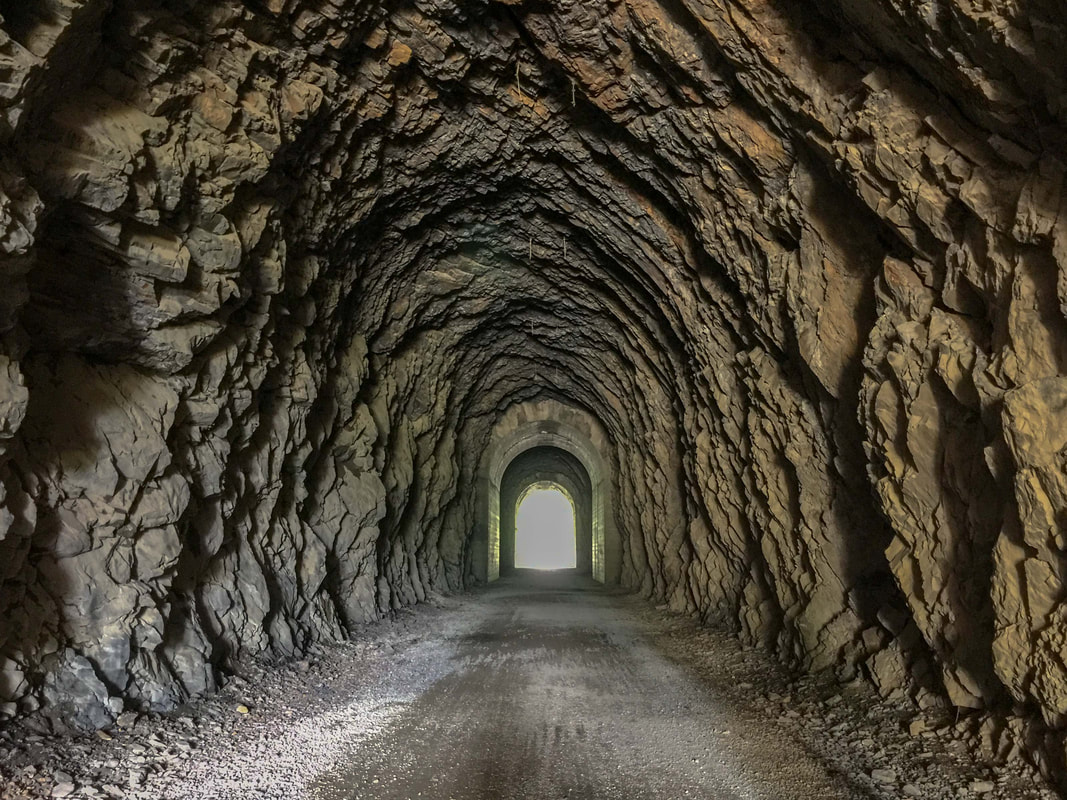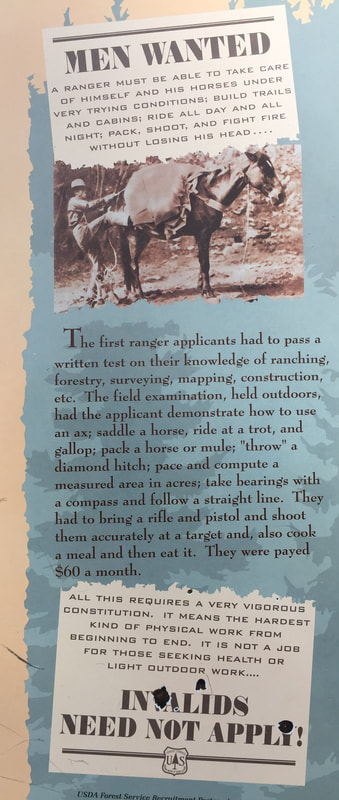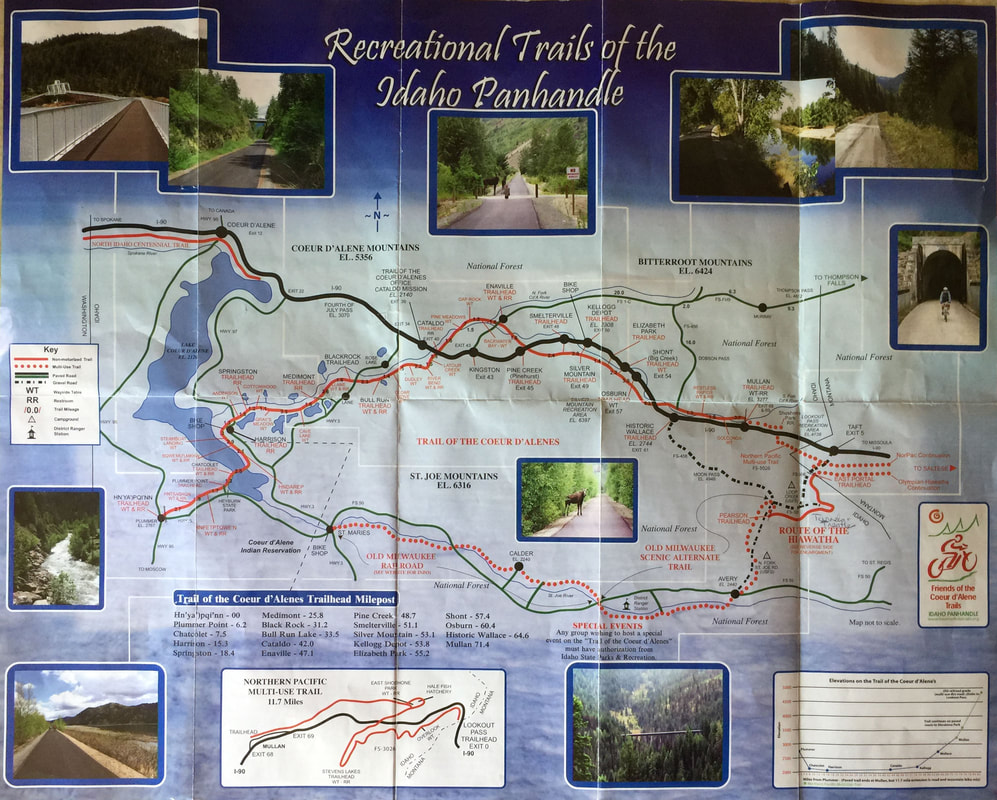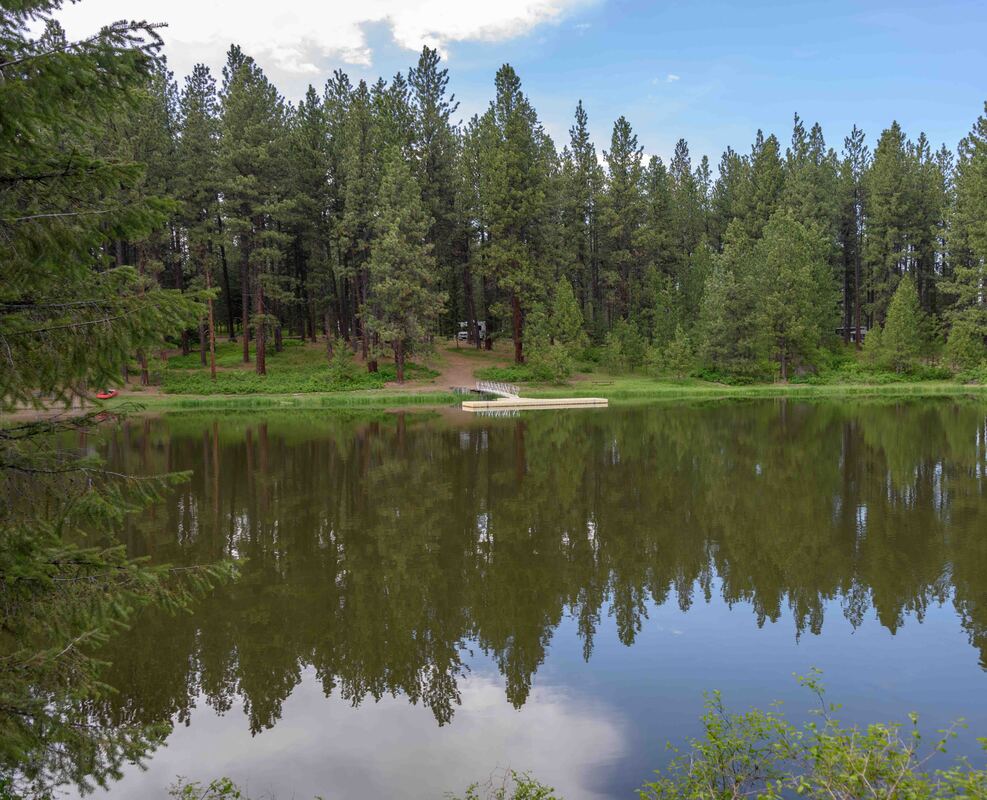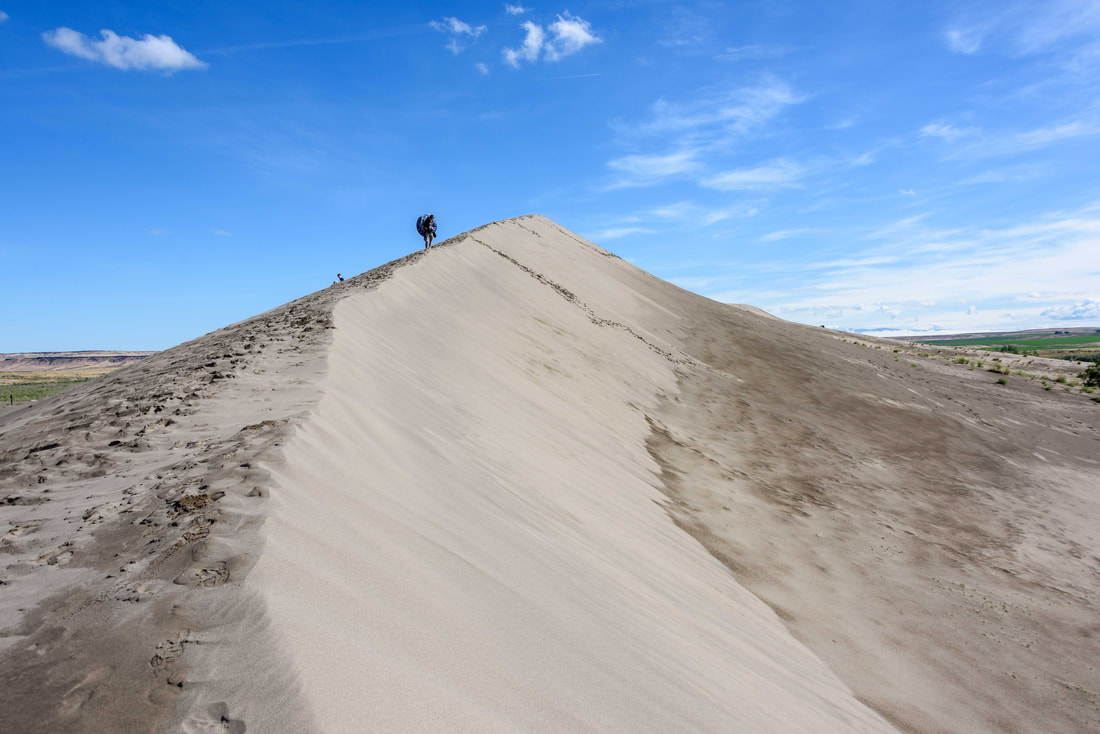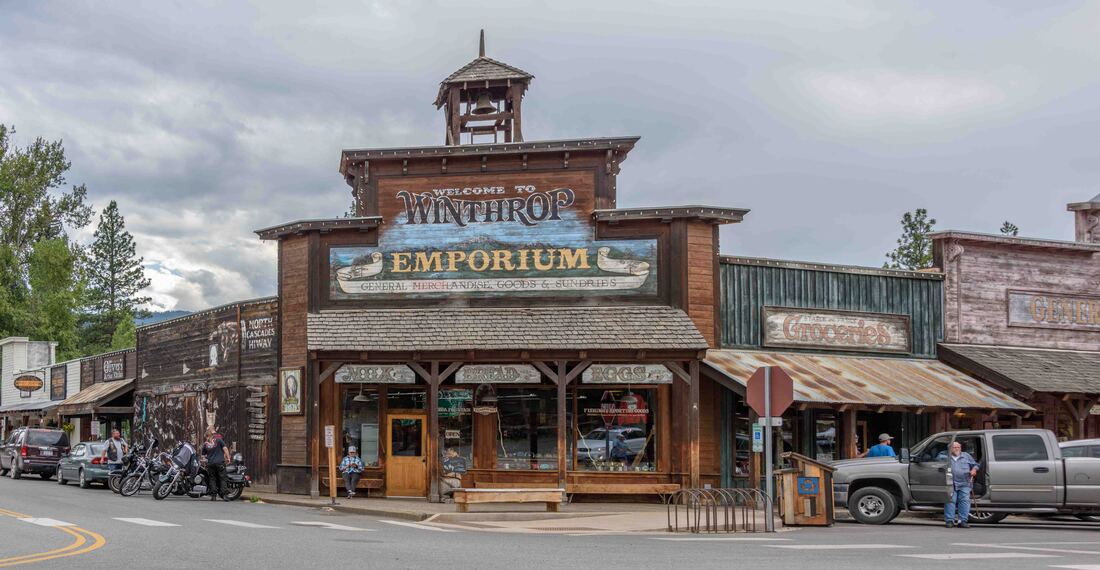
The North Cascades Scenic Byway was nearing completion in 1972 and Winthrop was situated at the eastern end of it. The town’s business people saw an opportunity to benefit from all those new travellers - original buildings from the late 1800s and early 1900s were given a facelift, shuffled about on the main street and repurposed to serve all manner of today’s tourist indulgences. The only thing that would make it a better experience would be to have the cars park elsewhere. (Winthrop, WA, June 15).

Throughout this past 4,000km there have been a surprising number of abandoned log cabins - a magnet for photography hobbyists. Snug in the mountains, this one took the picturesque prize and there was a posted story to go with it. In 1908, a German pioneer set about the laborious job of hauling materials from 10 miles away to build his dream home. Thirteen years later it still wasn’t complete, but the family moved on and the home has since slowly decayed. (Wauconda, WA, June 15)

Fairgrounds have become a favourite place to overnight. Often there are horses around or a horse show going on, the almost/totally deserted grounds are immaculate and always the sites are less expensive than the sardine-can style private RV parks. The 'funny' is how many times I ran from the camera back to my seat, with the 10 sec self timer set, to get this 'oh so relaxed' shot. (Republic, WA, June 14)
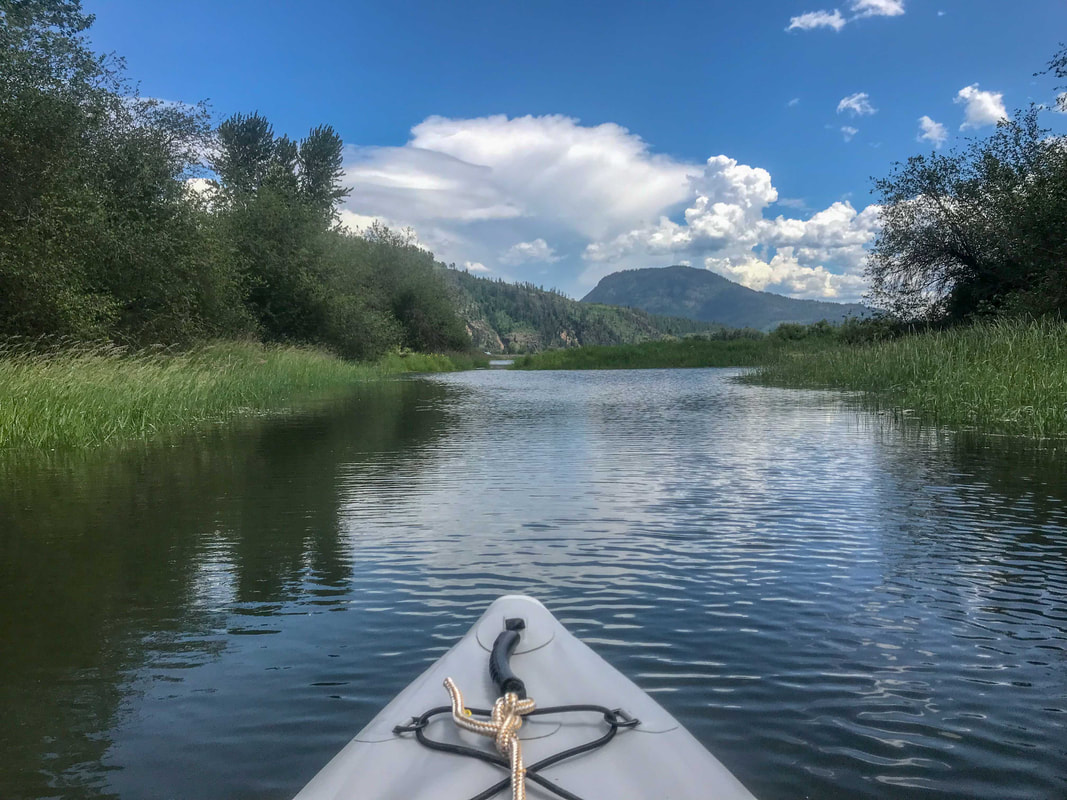
“Scenic Idaho” is stamped on every license plate and that really summed up this trip. For anyone with an interest in outdoor activities, it’s definitely a state worth visiting and for us, revisiting. Next time, it would be fun to take advantage of more of the kayaking opportunities. Above: Paddling in the windswept open waters was offset with calmer side channels - always fun to ‘explore’. (River delta near North Fork, ID, June 14)

As it’s name suggests, the Round Lake State Park has such a lake. A wee paddle twice around the pond the following morning was a peaceful way to start the day. While a few bullfrogs vied for the most attention, it was watching and then hearing the loud snap of a heron’s beak catching a fly that most impressed us - we thought they only dined on fish. (Algoma, ID, June 11)

The 38km North Idaho Centennial Trail’s midway point is the city of Coeur d’Alene, where the trail runs through town alongside the lake (above) before continuing as far as the Washington border. From there it becomes the 60km Spokane River Centennial Trail which terminates in Spokane. The latter is more scenic so we rode a section of it the following day.

The Route of the Hiawatha bike path...7 steel trestles and 9 tunnels along a 24km downhill trail - it was an easy ride, especially with a shuttle service at the bottom. Above: a viewpoint at the top
of the trail offered a glimpse of one of the trestles nestled in the forest. (Route of the Hiawatha, ID, June 5)

Between 1910-1960’s, the Milwaukee Railroad snaked along the Route of the Hiawatha. Travel was a novelty, passengers dressed in their Sunday best and dining was first class. The Pullman Porters company supplied the sleeping car attendants (formerly known as porters), drawn largely from former slaves. At its height in 1926, Pullman employed 10,000 porters - exclusively black - and is credited with helping form a black middle class, a precursor to the Civil Rights Movement.

The Rails to Trails organization recognizes just a subset of its US trails as the best (Hall of Fame), including this, the Coeur d’Alene Trail; the longest path in the area’s collection, a 115km (one-way) paved trail that travels through communities between Plummer and Wallace. The next series of pictures capture scenes along the way. (June 1-4).
Above: The cyclist only bridge, with its wavy theme park design, spanned the Coeur d’Alene Lake. Given that this picture was taken at the mid-point of the bridge, no expense was spared to create this trail. (Ride: Harrison to Plummer & return, ID, June 1)

Ironically, today’s health benefits of riding the smooth asphalt of this trail can be traced back to the mining of lead, sliver and zinc that left a trail of toxic contaminates in the waterways and along the rail bed. One way to contain the contaminates was to pave the trail and border it with gravel. Repeated signage warned us not to eat on the ground, but to stick to paved resting areas. (Ride: Cataldo to Blackrock & return, ID, June 2)
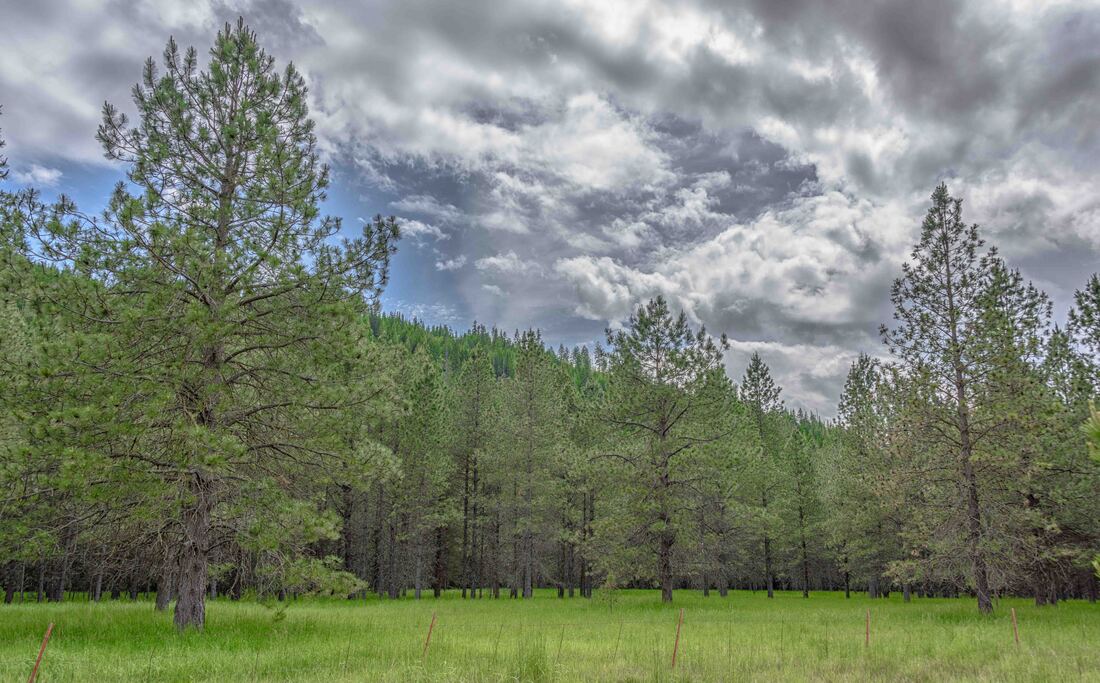
Rather than the usual forest scrub and bare patches, these Ponderosa Pines grew in a bed of soft, mint green grass - very pretty. The trees are particularly fire resistant as their bark simply peels off in the flames and the sun-starved lower branches easily burn off leaving no upper trail for the flame to climb. Wonder if this grove has gone through a recent burn given its perfect undergrowth.
(Cataldo to Kellogg & return, ID, June 4)

This path once served as the railroad route that connected the communities of Juliaetta and Kendrick. In the early 1900s, a Sunday outing for the townspeople would be to gather at their train depot to socialize with their neighbors while checking out who was arriving and departing-I’m sure there were few secrets in these small towns. (Juliaetta to Kendrick, May 31)

With the RV parked in an open field state park, miles from any town, a black cloud loomed and our phones blared an emergency tornado alert. We were told the wheelchair accessible washroom was the safest place to be...great, 20 campers and 6 dogs vying for the coveted spot. Not knowing what to expect, we battened down the hatches, packed some food and essentials and then watched the storm approach along with the other campers (who of course, couldn't resist telling their worst experiences). Alas, the storm veered north, and we were left with only an electrical storm and a good downpour. (Bruneau Dunes State Park, ID, May 27)

It was 1974 and Evel Knievel was going to ‘fly’ a mile across the Snake River canyon on his rocket motorcycle. We remember the moment - glued to our TV’s, with palms sweating. Today, as Rick perched atop Evel’s launch ramp, the 1-mile canyon span with its steep jagged cliffs seemed daunting. After all the hype, Evel’s parachute accidentally opened upon takeoff and the moment fizzled like a balloon with a leak. As a postscript; 42 years later the rocket designer’s son built a successor, named Evel Spirit, and another stuntman completed the feat.
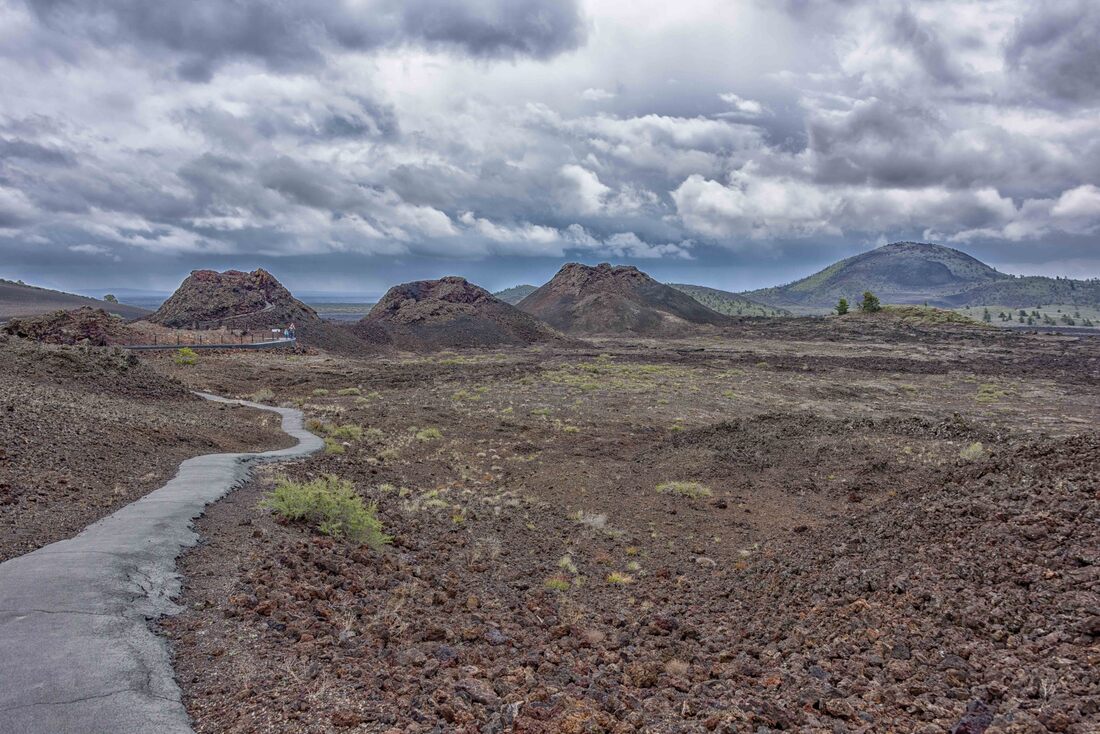
A Great Rift, 53mi long, runs through Idaho. Between 15,000 to just 2,000 years ago, lava made its way through fissures to create the Craters of the Moon Lava Field. The 618 sq mi preserve contains many examples of unique volcanic features: cinder cones, spatter cones, lava tubes, volcanic bombs and tree molds. Above: Spatter Cones - a trio of miniature volcanoes so named for the hot lava spatter that created them - similar to the appearance of clay thrown at a wall. (Craters of the Moon Nat’l Monument & Preserve, ID, May 24)

Lewis and Clark canoed this, the Clearwater River, in 1806 as part of their exploration up the Missouri River, across the Rocky Mountains and down the Columbia River to the Pacific Ocean. Amazingly, their party of 31 only experienced one loss and that was due to appendicitis. As we drove beside about 100 miles of rapids, now a draw for white water rafters, the perilousness of the expedition was reinforced. (Nez Perce-Clearwater National Forest, ID, May 21-22)

The undulating dune shaped fields of The Palouse span a collection of farming towns in Washington and Idaho. Over the last several ice ages, glaciers creeping southward from Canada ground up rock to create a fine dust called glacial flour. The ‘flour’ ended up in a glacial lake and when the lake dried up, all that silt was left for the winds to blow it into today’s landscape. (The Palouse, WA, May 17-20)










